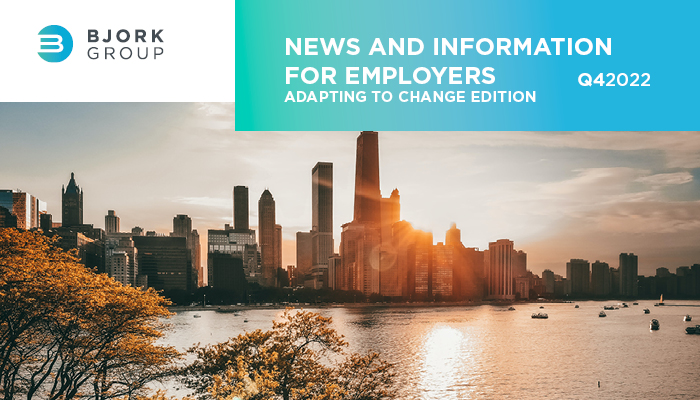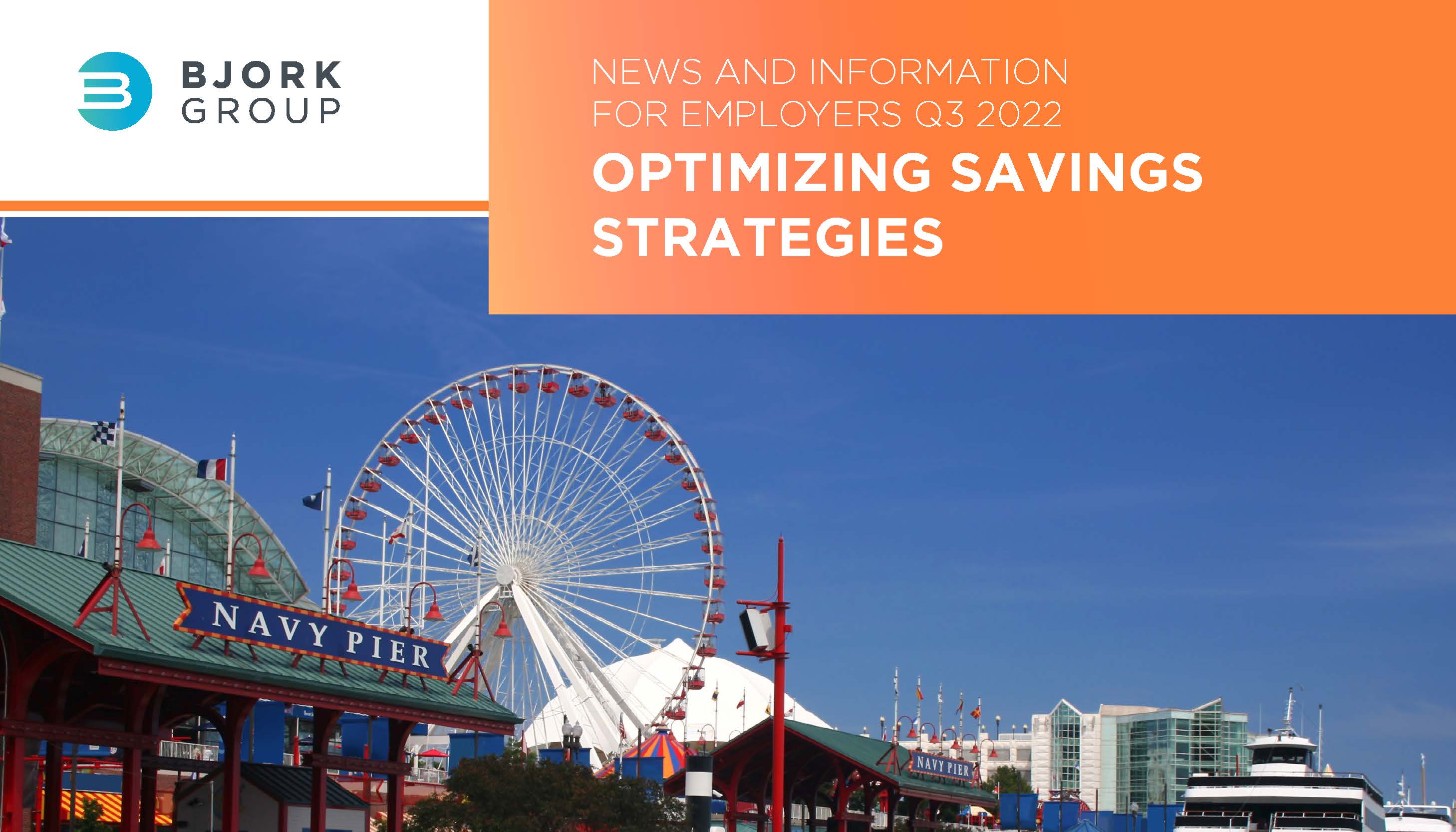Plan Sponsor Newsletter Q4 2022: Adapting to Change Edition
- Bjork Group



Use these insights and help optimize your 401(k) plan to align with savings and talent management strategies.


If you are looking for ways to improve fiduciary oversight and strengthen your company's retirement plan, a committee is one of the best places to start. A committee is responsible for the fiduciary oversight of your retirement plan by determining plan administration, investment offerings, costs and enhanced features.


Innovative and creative approaches to help your company stand out while improving workers’ financial well-being


Key strategies to help employers maximize savings and minimize taxes


The most comprehensive pension reform in 20 years, the SECURE Act, is a step forward to allow people greater access to retirement plans.


Over the last few years, employees’ mindsets have changed, shifting to wanting more than just a raise every year.
Employees want a total rewards package that includes everything from a retirement plan to financial wellness and more work-life balance flexibility.
